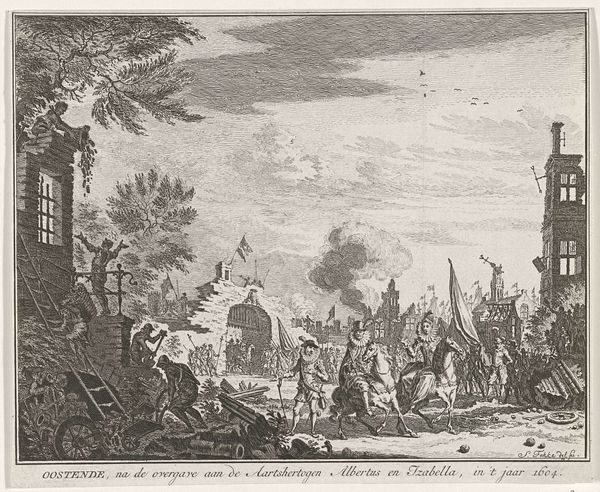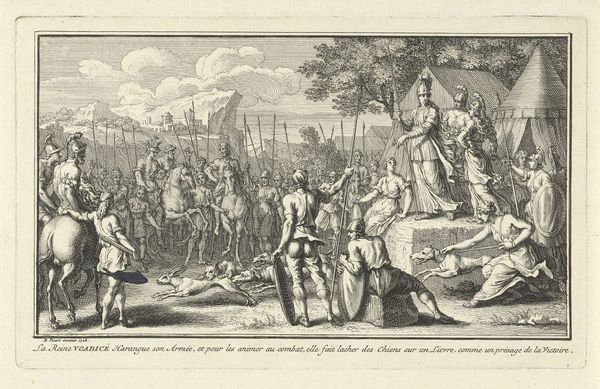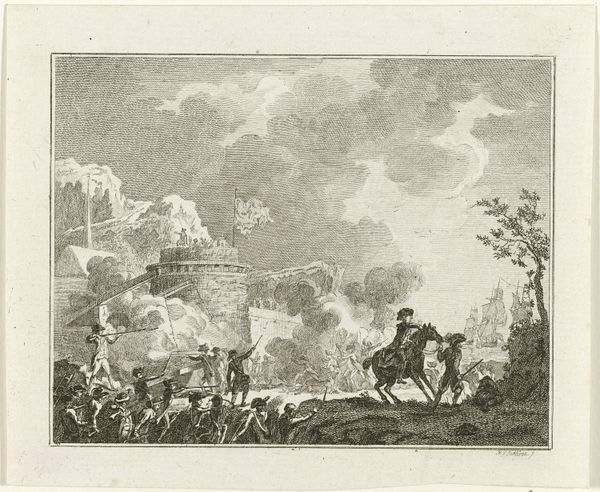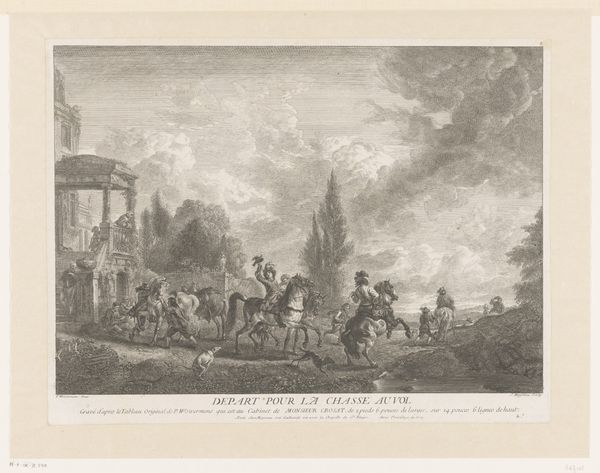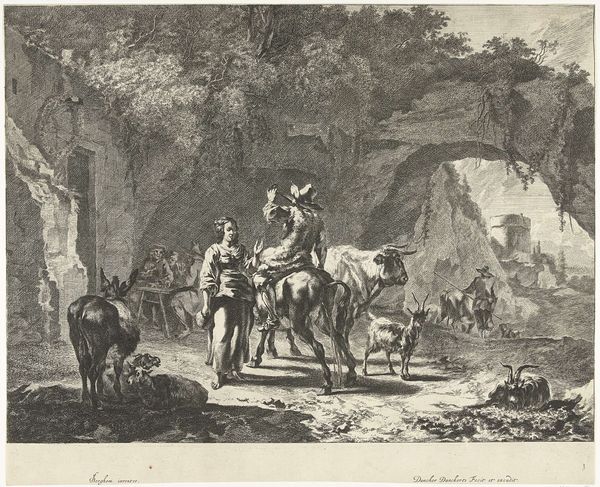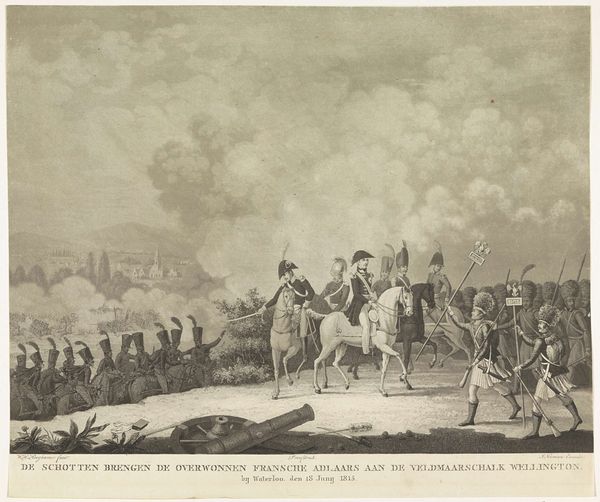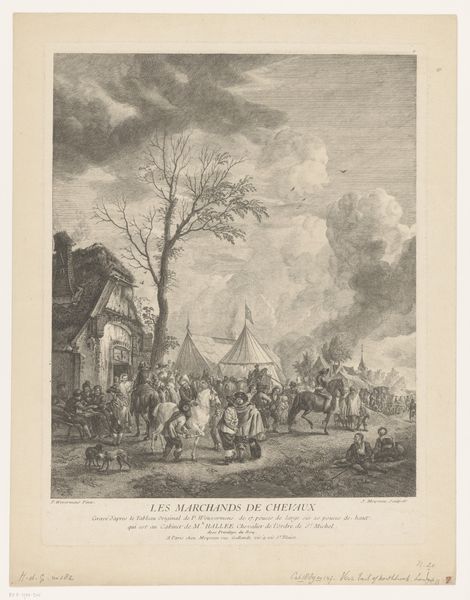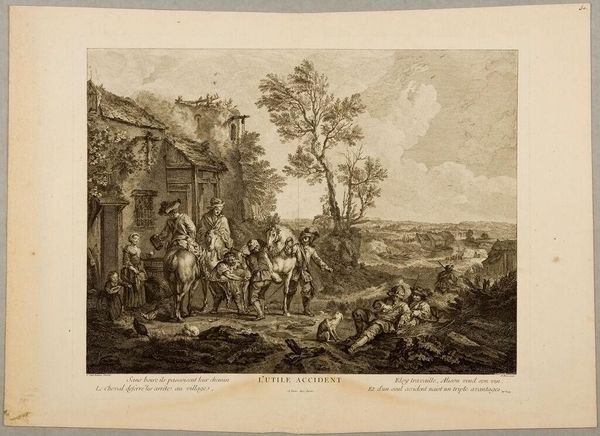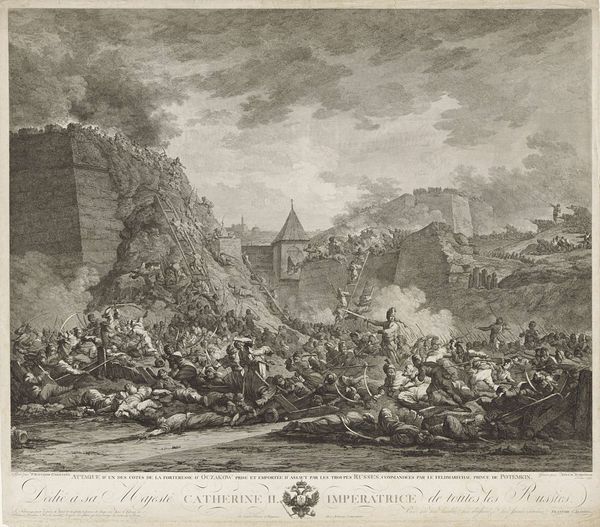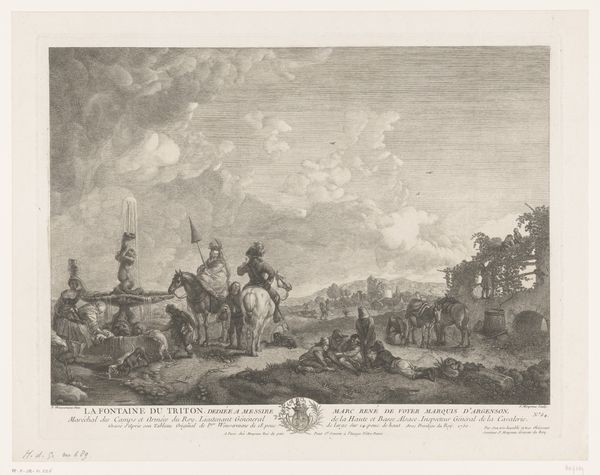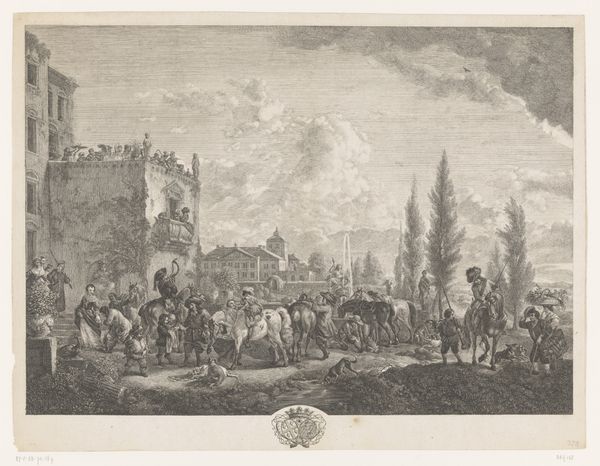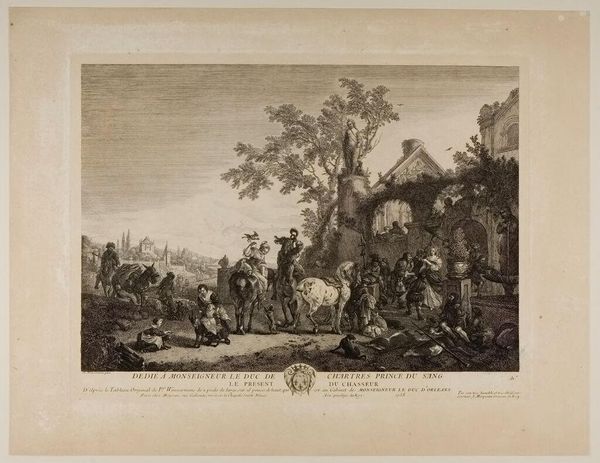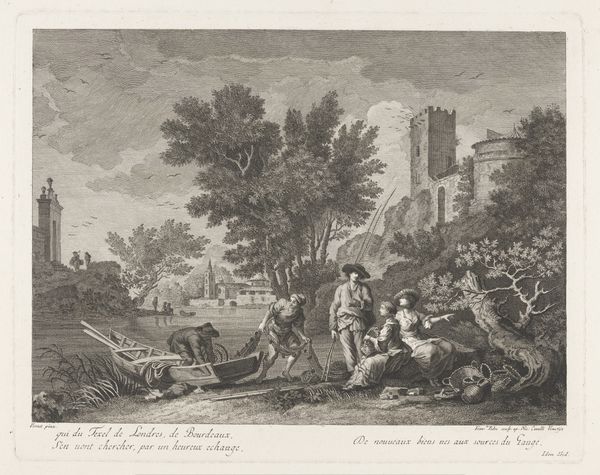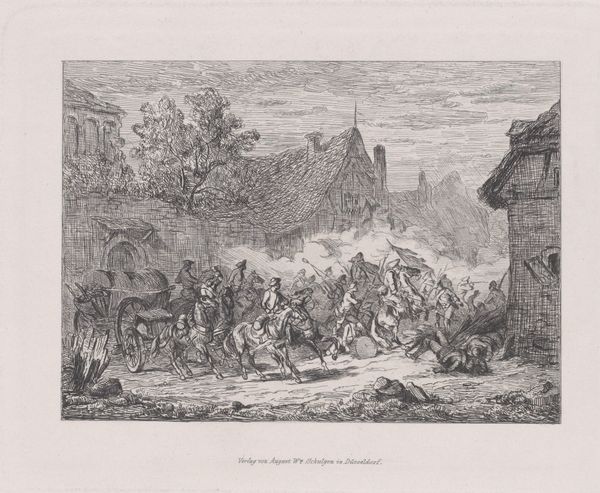
Ontmoeting tussen Wellington en Blücher na de slag bij Waterloo, 1815 1815
0:00
0:00
print, engraving
# print
#
old engraving style
#
landscape
#
etching
#
romanticism
#
history-painting
#
engraving
Dimensions: height 361 mm, width 434 mm
Copyright: Rijks Museum: Open Domain
Curator: This print, created around 1815, depicts the meeting between Wellington and Blücher after the Battle of Waterloo. Willem Hendrik Hoogkamer is credited with the work, now residing in the Rijksmuseum. It's primarily an engraving, and etching gives it an incredible level of detail. Editor: My first impression is somber. Even without knowing the history, there’s a sense of exhausted relief underscored by loss. The composition uses light and shadow in a way that directs our eye through the scene, from the fallen soldiers to the generals. Curator: The choice of engraving speaks volumes, doesn't it? The meticulous labor involved reflects the monumental effort and cost of the battle itself. Think about the engraver painstakingly recreating the scene for mass consumption. It highlights how these victories were commodified and distributed to bolster national pride and shape public opinion. Editor: Agreed, the medium is quite fitting. However, from a visual standpoint, look at the artist’s masterful use of line and texture. The crispness of the generals contrasts with the hazy smoke on the horizon, which are signs of active fighting in the background. And notice how the "La Belle Alliance" building acts as a spatial anchor, connecting foreground and background through lines of sight. It reinforces the symbolic meaning. Curator: Right, and consider the "La Belle Alliance" itself. Beyond a place of alliance, it's simply an inn, a mundane building that becomes significant due to historical events and processes. I feel Hoogkamer is suggesting a relationship between ordinary people and historical figures by choosing to have this seemingly unremarkable location play center-stage. The fallen bodies speak to the cost of that alliance, don’t they? Editor: Undeniably. There’s a certain romantic sensibility in presenting it this way, emphasizing emotional response and the drama inherent in this meeting of commanders. It pulls you into a feeling of history being created even through all of this visual chaos and darkness. The artist plays heavily on pathos, highlighting humanity despite—or maybe because of—the devastation. Curator: Ultimately, it speaks volumes of not just military success, but of social mechanisms shaping how we remember events through visual culture. It's the print itself that does the work of creating a memory of national identity tied into international conflicts and political shifts. Editor: A testament, indeed, to how carefully structured composition combined with specific methods of visuality and execution makes "Ontmoeting tussen Wellington en Blücher" a work filled with historical import.
Comments
No comments
Be the first to comment and join the conversation on the ultimate creative platform.
